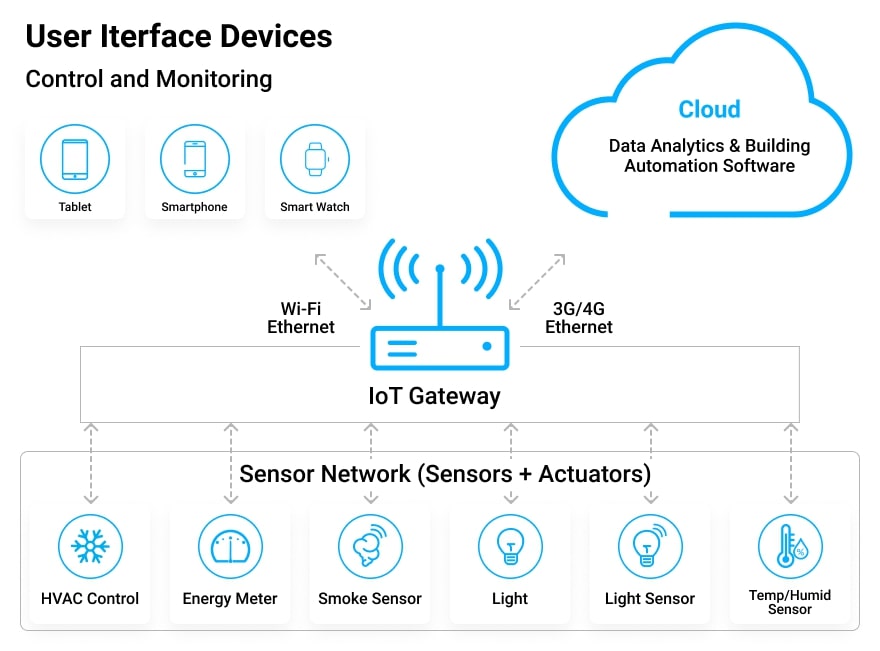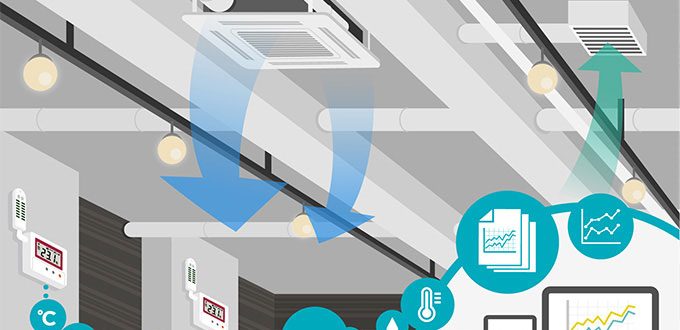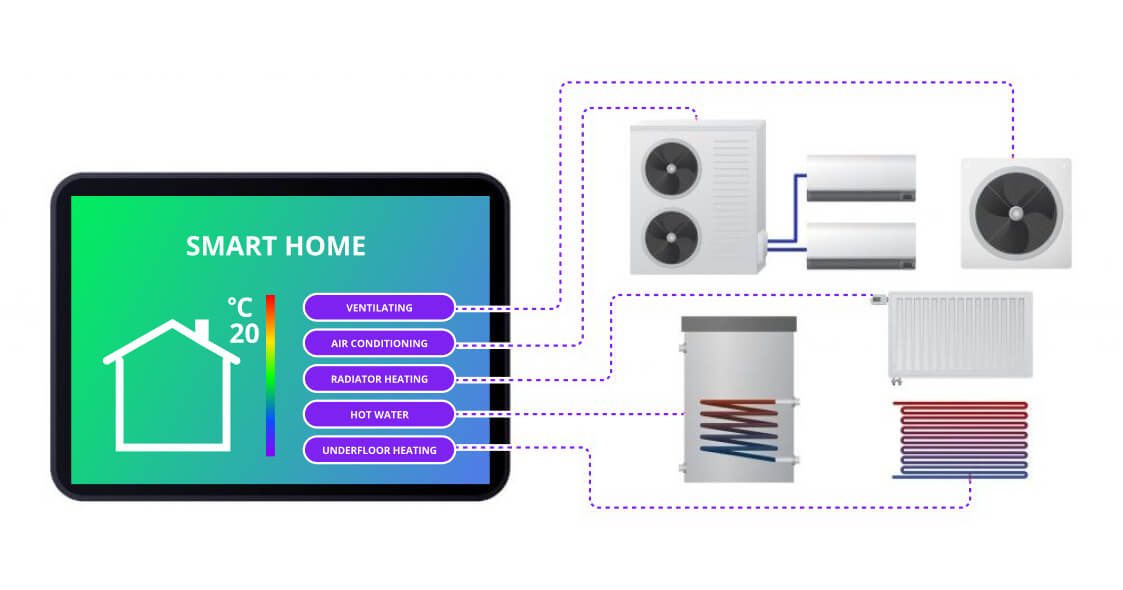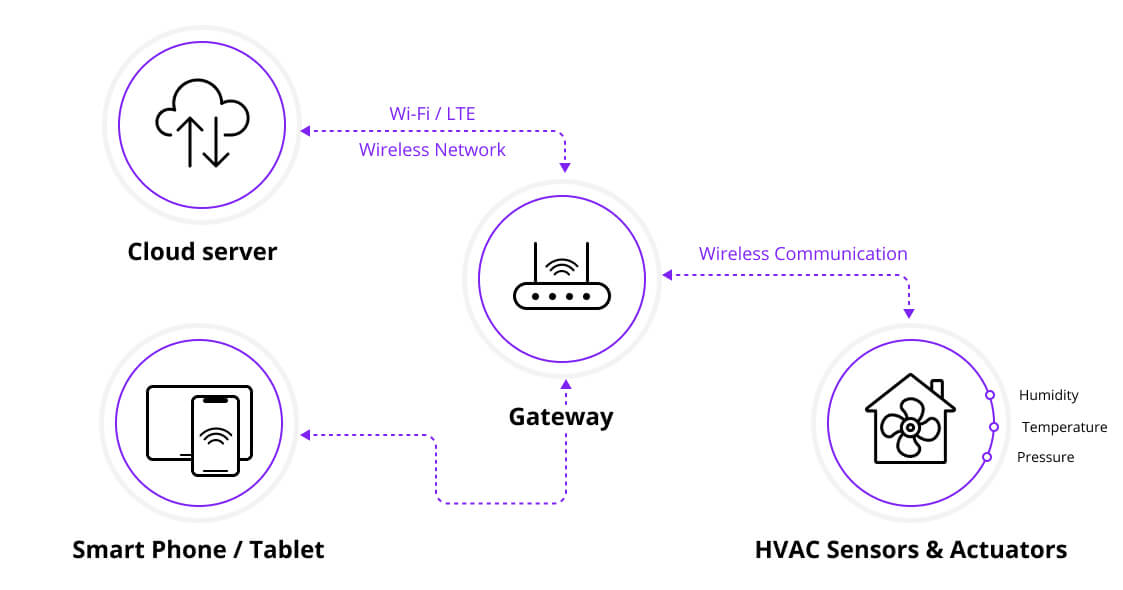Send us an email
Please enter your name and contact info.
Please enter your name and contact info.
Call Us Today! (850) 748-1066

Serving Families Throughout Pensacola
Imagine having full control over the temperature, air quality, and energy consumption of your HVAC system, all at the palm of your hand. With the integration of IoT in HVAC systems, this futuristic dream is now a reality. By connecting your HVAC system to the Internet of Things (IoT), you can enjoy enhanced comfort, increased energy efficiency, and improved maintenance. In this article, we will explore the benefits and advancements of integrating IoT technology into HVAC systems, revolutionizing the way we experience indoor climate control.

This image is property of www.softeq.com.
HVAC stands for Heating, Ventilation, and Air Conditioning. It refers to the technology used to control the indoor environment of buildings, ensuring thermal comfort and air quality. HVAC systems are essential in maintaining a comfortable and healthy indoor environment for occupants, regardless of the external weather conditions.
HVAC systems consist of several key components working together to provide heating, ventilation, and air conditioning. These components include furnaces, boilers, heat pumps, air conditioners, ventilation fans, ductwork, and thermostats. Each component plays a crucial role in regulating temperature, humidity, and air quality within a building.
HVAC systems are integral to maintaining comfort and productivity within buildings. They not only regulate temperature but also control humidity levels, filter and circulate air, and remove pollutants. Proper HVAC installation and maintenance are essential for creating a safe, healthy, and comfortable indoor environment, which in turn contributes to the overall well-being and productivity of occupants.
IoT, or the Internet of Things, refers to the network of devices and objects that are connected to the internet and can communicate and exchange data with each other. IoT technology allows for the integration and automation of various systems and devices, enabling remote monitoring, control, and data analysis. It has revolutionized numerous industries by enabling smart and connected solutions.
IoT has had a profound impact on various industries, ranging from healthcare and manufacturing to agriculture and transportation. By connecting devices and systems, IoT enables real-time monitoring, predictive maintenance, data analytics, and enhanced efficiency. It has the potential to optimize processes, reduce costs, and drive innovation across numerous sectors.
In the context of building automation, IoT plays a transformative role. IoT-enabled devices and systems can be used to automate and optimize various aspects of building operations, including HVAC systems. By integrating IoT technology, buildings can become smart, with enhanced control, energy efficiency, and occupant comfort. IoT integration in HVAC systems has the potential to revolutionize the way buildings are managed and create a more sustainable future.

This image is property of www.adriasecuritysummit.com.
One of the key benefits of integrating IoT technology in HVAC systems is improved energy efficiency. IoT-enabled sensors can collect real-time data on variables such as temperature, occupancy, and weather conditions. This data can then be analyzed to optimize HVAC system performance, adjusting heating, cooling, and ventilation to match actual demands. By reducing energy wastage and optimizing operational efficiency, IoT integration can lead to significant energy savings and lower utility costs.
In addition to energy efficiency, IoT integration in HVAC systems can deliver cost savings in various ways. By using predictive maintenance algorithms, IoT-enabled systems can detect and address potential issues before they escalate into costly repairs. Furthermore, remote monitoring and control capabilities enable facility managers to optimize HVAC system performance without the need for on-site visits, reducing maintenance costs and downtime.
IoT integration in HVAC systems can enhance occupant comfort and indoor air quality. By utilizing sensors to monitor temperature, humidity, and air quality, HVAC systems can automatically adjust settings to maintain optimal conditions. Additionally, IoT-enabled air filtration systems can detect and remove allergens, pollutants, and pathogens, ensuring a healthier indoor environment. Improved comfort and air quality contribute to the well-being and productivity of occupants.

This image is property of www.zenatix.com.
Another advantage of IoT integration in HVAC systems is the ability to remotely monitor and control system performance. Facility managers can access real-time data and performance analytics from anywhere, allowing for proactive management and immediate response to any issues. Remote monitoring also enables timely adjustments and optimizations, resulting in improved system reliability and reduced maintenance costs.
Sensors play a critical role in IoT-enabled HVAC systems, providing data on various parameters that inform system operations and optimizations. Temperature sensors, humidity sensors, occupancy sensors, and air quality sensors are commonly used in HVAC applications. These sensors collect real-time data, which is then relayed to the HVAC system’s control unit for analysis and decision-making.
Temperature sensors are fundamental in HVAC systems and help measure ambient temperature for accurate climate control. Humidity sensors measure the moisture content in the air, assisting in maintaining optimal humidity levels. Occupancy sensors detect the presence or absence of occupants, allowing for adjustments in HVAC settings based on occupancy patterns. Air quality sensors monitor pollutant levels, particulate matter, and CO2 levels to ensure healthy indoor air quality.

This image is property of euristiq.com.
To enable effective communication between sensors, HVAC systems, and other IoT-enabled devices, specific communication protocols are employed. Popular communication protocols in IoT-enabled HVAC systems include Wi-Fi, Bluetooth, Zigbee, and BACnet. These protocols facilitate the seamless transmission of data between devices, allowing for centralized control and intelligent decision-making.
Data analytics plays a crucial role in optimizing HVAC system performance and improving energy efficiency. IoT-enabled HVAC systems generate a vast amount of data from sensors and other sources. This data can be analyzed using advanced algorithms to identify patterns, detect anomalies, and optimize system performance. Through data analytics, facility managers can gain valuable insights into energy usage, system performance trends, and potential cost-saving opportunities.
Predictive maintenance is another key benefit of IoT integration in HVAC systems. By continuously monitoring system components, analyzing data, and applying machine learning algorithms, potential malfunctions and failures can be predicted well in advance. This proactive approach to maintenance allows for timely repairs or replacements, minimizing system downtime and reducing maintenance costs.

This image is property of euristiq.com.
Cloud computing plays a crucial role in enabling the seamless integration and management of IoT-enabled HVAC systems. By utilizing cloud-based platforms, data from sensors and other devices can be securely stored, analyzed, and accessed from anywhere, at any time. Cloud computing enables scalable and flexible data storage, big data analytics, and seamless integration with other smart building systems.
Cloud integration offers several benefits for IoT-enabled HVAC systems. It enables remote access and control, allowing facility managers to monitor and manage multiple buildings and HVAC systems from a centralized platform. Cloud-based analytics and reporting provide valuable insights into system performance, energy consumption, and maintenance requirements. Additionally, cloud storage ensures data redundancy and resilience, protecting against data loss.
While cloud integration offers numerous advantages, it also presents challenges and security considerations. Data privacy and security are crucial aspects when transmitting and storing sensitive information in the cloud. Robust encryption, authentication mechanisms, and adherence to stringent security standards are essential to ensure the protection of data. Additionally, ensuring reliable connectivity and preventing system vulnerabilities are key challenges that need to be addressed when implementing cloud-based IoT-enabled HVAC systems.
smart thermostats are a key component in IoT-enabled HVAC systems. They are advanced devices that enable users to remotely control and automate temperature settings in their buildings. Smart thermostats offer features such as programmable schedules, real-time energy usage monitoring, and integration with other smart devices in the building, providing enhanced comfort and energy efficiency.
In IoT-enabled HVAC systems, smart thermostats act as the central control unit, interfacing with sensors, HVAC systems, and other smart devices. They receive data from sensors and use advanced algorithms to analyze and optimize HVAC system settings in real-time. Smart thermostats also enable remote access and control, allowing users to adjust temperature settings, monitor energy usage, and receive alerts through mobile applications or web interfaces.
Smart thermostats offer a range of features that contribute to improved energy efficiency and user comfort. Programmable schedules allow users to set temperature adjustments based on occupancy patterns, reducing energy waste during unoccupied periods. Real-time energy usage monitoring provides valuable insights into consumption patterns and enables users to make informed decisions to save energy and reduce costs. Integration with other smart devices, such as occupancy sensors and lighting systems, allows for seamless automation and coordination within the building.
Building Management Systems (BMS) are comprehensive systems that automate and centralize the control of various building functions, including HVAC systems. BMS typically consist of hardware, software, and network infrastructure that integrate and monitor different building systems, ensuring optimal performance, energy efficiency, and occupant comfort.
Integrating IoT technology with BMS unlocks numerous benefits for building management. By combining data from IoT-enabled devices and sensors with BMS platforms, facility managers gain real-time insights into building performance. Data-driven decision-making enables optimizations, predictive maintenance, and seamless coordination among different building systems, including HVAC. IoT integration with BMS allows for the holistic management of building operations, leading to enhanced efficiency and sustainability.
The integration of IoT with BMS enhances building optimization and efficiency by enabling real-time monitoring, control, and analytics. Through IoT-enabled sensors, BMS platforms can collect data on various building parameters, including HVAC system performance and energy consumption. This data is then analyzed to identify inefficiencies, optimize system settings, and implement energy-saving measures. By leveraging the power of IoT and BMS integration, building operations can be streamlined, and energy consumption can be minimized while maintaining occupant comfort.
Several case studies demonstrate the successful implementation of IoT in commercial buildings, particularly in HVAC systems. For example, a multinational retail chain integrated IoT-enabled sensors with their HVAC systems to optimize energy consumption. Real-time data collection and analysis allowed for efficient control of cooling and heating systems based on occupancy patterns, resulting in significant energy savings.
In another case study, a commercial office building leveraged IoT technology to implement predictive maintenance for their HVAC systems. By continuously monitoring system performance, analyzing data, and utilizing machine learning algorithms, potential failures were detected in advance, allowing for timely repairs. This proactive approach to maintenance reduced downtime, improved system reliability, and minimized repair costs.
The integration of IoT in residential HVAC systems has also revolutionized home comfort and energy efficiency. For instance, smart thermostats, such as the popular Nest Learning Thermostat, have transformed residential heating and cooling. These devices learn from users’ behavior, adjust temperature settings accordingly, and provide energy-saving recommendations. With remote access and control capabilities, homeowners can optimize HVAC settings and save energy even when away from home.
The future of IoT and HVAC systems holds numerous advancements and possibilities. As technology continues to evolve, more sophisticated sensors, improved communication protocols, and advanced analytics algorithms will further enhance system performance and energy efficiency. Artificial intelligence and machine learning will play increasingly significant roles in optimizing HVAC operations, enabling predictive maintenance, and delivering personalized comfort solutions.
While IoT integration in HVAC systems offers immense benefits, certain challenges and limitations need to be addressed. Data privacy and security concerns should be prioritized to ensure the protection of sensitive information. Interoperability between different IoT devices and systems requires standardized communication protocols and compatibility. Additionally, the initial cost of IoT-enabled HVAC systems and the need for skilled personnel for installation and maintenance may pose barriers to widespread adoption.
In conclusion, the integration of IoT technology in HVAC systems presents numerous benefits, ranging from energy efficiency and cost savings to improved comfort and remote monitoring capabilities. Through IoT-enabled sensors, data analytics, cloud computing, and smart devices, HVAC systems can be optimized, resulting in enhanced efficiency, reduced maintenance costs, and a more sustainable future. As technology advances and challenges are addressed, IoT integration will continue to transform the way we manage and experience indoor environments.